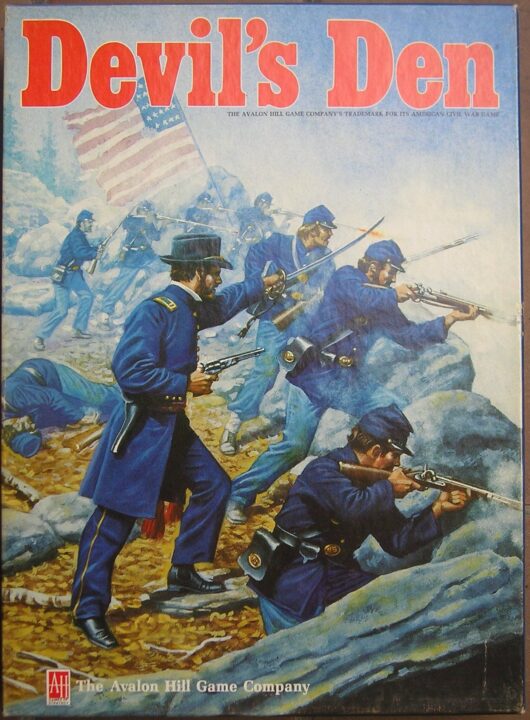Alright, friends, brace yourselves: I’m about to share my review of a board game that’s tried its best to turn my living room into a den of plotting, laughter, and minor friendship betrayals. If you’re searching for a game with sneaky moves, wild negotiation, and more strategy than a squirrel in winter, you’re in the right place. Of course, no game is perfect—so I’ll share the good, the bad, and the bits that made us want to flip the table (but only a little). Let’s get started!
How It Plays
Setting up
First, spread out the main board unless your table is half full of pizza boxes like mine always is. Each player grabs their color tokens, some doom cubes, and secret role cards. Place the devil mini in the center (he likes the spotlight). Set up the loot cards in a draw pile. If you’re playing with fewer than four friends, put an empty chair at the table for moral support.
Gameplay
Turns go round the table clockwise. On your turn, draw a loot card or try to bargain with your enemies—sorry, friends—for extra moves. You can play action cards to mess with someone’s plan or protect your own. Devil tokens move around, causing chaos wherever they land. Use negotiation, backstabbing (with love), and a cold reading of your group’s tells to get ahead. The rules warn against flipping the board but sometimes it’s tempting.
Winning the game
The game ends when someone collects five infernal gems or the doom track fills up. If you’re the gem-hoarding mastermind, you win! If the doom track finishes first, the devil wins—and you all lose. Happens more often than you’d expect. So, watch out for sneaky deals and roll your eyes dramatically at every betrayal.
Want to know more? Read our extensive strategy guide for Devil’s Den.
Game Balance and Fairness: Does Devil’s Den Deliver?
So, let’s talk about game balance and fairness. Because nothing ruins a friendly gathering more than your mate Jim flipping the board in a huff. In Devil’s Den, the dread of unfair mechanics haunted me after I read the rulebook. You never know—some games have you losing on turn two because you sat on the wrong side of the table. (Looking at you, Monopoly.)
But, Devil’s Den tries to even the odds… for the most part. Each player starts with the same resources, and you all face the same nasty demons. The game shines when everyone feels they have a fighting chance. There were only a few moments when the luck of a card draw left my friend Sarah in the dust. I hate it when winning comes down to a lucky card—so, small point off, Devil’s Den.
I noticed that veteran gamers held an edge. A few rules could have been clearer, and once you grasp the strategies, it’s easier to stay on top. Newbies might feel a bit overwhelmed, but after a couple rounds, everyone was plotting like evil overlords. (You should have seen my nan’s face when her imps started winning!).
All in all, fairness gets a pretty solid thumbs up here. I only wish the game gave struggling players more chances to catch up. But hey, at least no one threw their drink at me. Next up, I’ll chat about player interaction and if Devil’s Den makes enemies or best friends—bring popcorn!
Player Interaction and Negotiation Dynamics in Devil’s Den
If you ever wanted to know which of your friends can’t be trusted, just play Devil’s Den with them. This game takes player interaction and negotiation and turns the dial up to eleven, then breaks the knob right off. I sat down with my usual gang—Sarah the Shark, Bluffy Steve, and Anna the Honest (narrator: she was not honest)—and by the second round, it felt more like a heated family reunion than a board game night.
The game thrives on alliances, backstabbing, and whispered side deals. The negotiation isn’t just a flavor add-on; it’s baked right into the main mechanics. You almost can’t win unless you cut deals—temporary ones at least—and then promptly betray your allies when the timing’s right. The rules encourage table talk, double-crossing, and making promises you have no intention of keeping. We found ourselves shaking hands, locking eyes, and then ripping each other’s trust to pieces faster than you can say “I swear I’ll help you next turn.”
Of course, all the haggling and bluffing can lead to some heated moments. At one point, Bluffy Steve staged a walkout, only to re-enter triumphantly after Anna bribed him with snacks. Devil’s Den is a master class in people skills—if by “people skills” you mean “creative lying and emotional blackmail.” It’s the kind of game where I wonder if my friendships might need a therapist afterwards, but man, it’s a blast if everyone’s on board for the chaos.
Gather up your best poker face, because the next section is about replay value and strategic depth, where the real long-term game begins…
Replay Value and Strategic Depth in Devil’s Den: Is It Worth a Second Round?
Alright, so let’s talk about Devil’s Den and whether it actually makes you want to play again, or just makes you want to use the box as a coaster. I’m happy to report the game does a pretty good job on the replay front. Every time my friends and I pulled it out (the game, to clarify), we ended up with a totally different experience. The mix of hidden objectives and varied starting resources means you can’t just stick to one boring plan. Unless your plan is chaos, in which case, yes, it’s always a winner.
Strategically, Devil’s Den actually tickled my slightly overworked brain cells. There’s a decent amount to think about—when you make your moves, who you trust, who you’ll inevitably betray (sorry, Steve). Every decision could lead to sweet victory or crushing defeat, and I like that. I’ve played some games where you can basically sleepwalk through and still win. Not here! If you snooze, you lose. There’s no set path to victory, and adapting your approach based on what other people are doing is key, unless you’re aiming for the infamous last-place trophy (which, yes, my friend Dave proudly displays at home now).
To sum it up: Devil’s Den offers enough twists and strategy to keep things fun and fresh after many games. If you’re the type who likes to work out a new plan every session, you’re in luck (the good kind, for once).
Next time, I’ll talk about what the game actually looks like—because let’s be honest, we all judge a game by its cover!
Devil’s Den Board Game: Artwork and Components Reviewed
The artwork in Devil’s Den made me do a double-take. You know how some games look like they let their cousin’s toddler doodle the cards? Not here. The board is dark, moody, and gives off a real sense of danger—like, “maybe don’t open that door” vibes. It helps everyone at the table actually feel like they’re sneaking around some cursed forest, instead of just eating stale chips and arguing about rules.
The cards and tokens feel sturdy, and let me tell you, I’ve played with people who treat game parts like they’re auditioning for WWE. Still, after a few chaotic rounds (and some accidental soda spills), everything held up. The little devil meeples are a great touch. They’re cute but kind of creepy—like if Gremlins had a baby with a marshmallow. I appreciate that the colors don’t all blend together, so you don’t accidentally move the wrong piece after a heated round. (Not that I’ve ever done that. Honest.)
One minor gripe: the rulebook could use better illustrations. Some images look like they were printed on an old potato. But hey, I’ve seen worse. It didn’t stop us from playing, but it did cause a few laughs and one group photo with the weirdest diagram in board game history.
Do I recommend Devil’s Den based on its looks and feel alone? Absolutely. Just don’t lick the tokens. Trust me on that one.
Conclusion
Alright, that’s a wrap on my rollercoaster ride through Devil’s Den! After plenty of laughs, a few arguments, and one dramatic snack spill (don’t ask), I can say this game packs in loads of strategy and replay value with just enough chaos to keep things spicy. The artwork is cool, and the components are solid—although why there’s a goblin in the rulebook wearing sunglasses, I’ll never know. The game feels mostly fair, though luck sometimes swings a bit hard for my taste. If you want a game where scheming against your friends is just as important as smart moves, Devil’s Den delivers. Just keep an eye on your chips, your alliances, and your snacks. Thanks for sticking with me, and may your dice always land on the right side. That’s it for my review—happy gaming!


